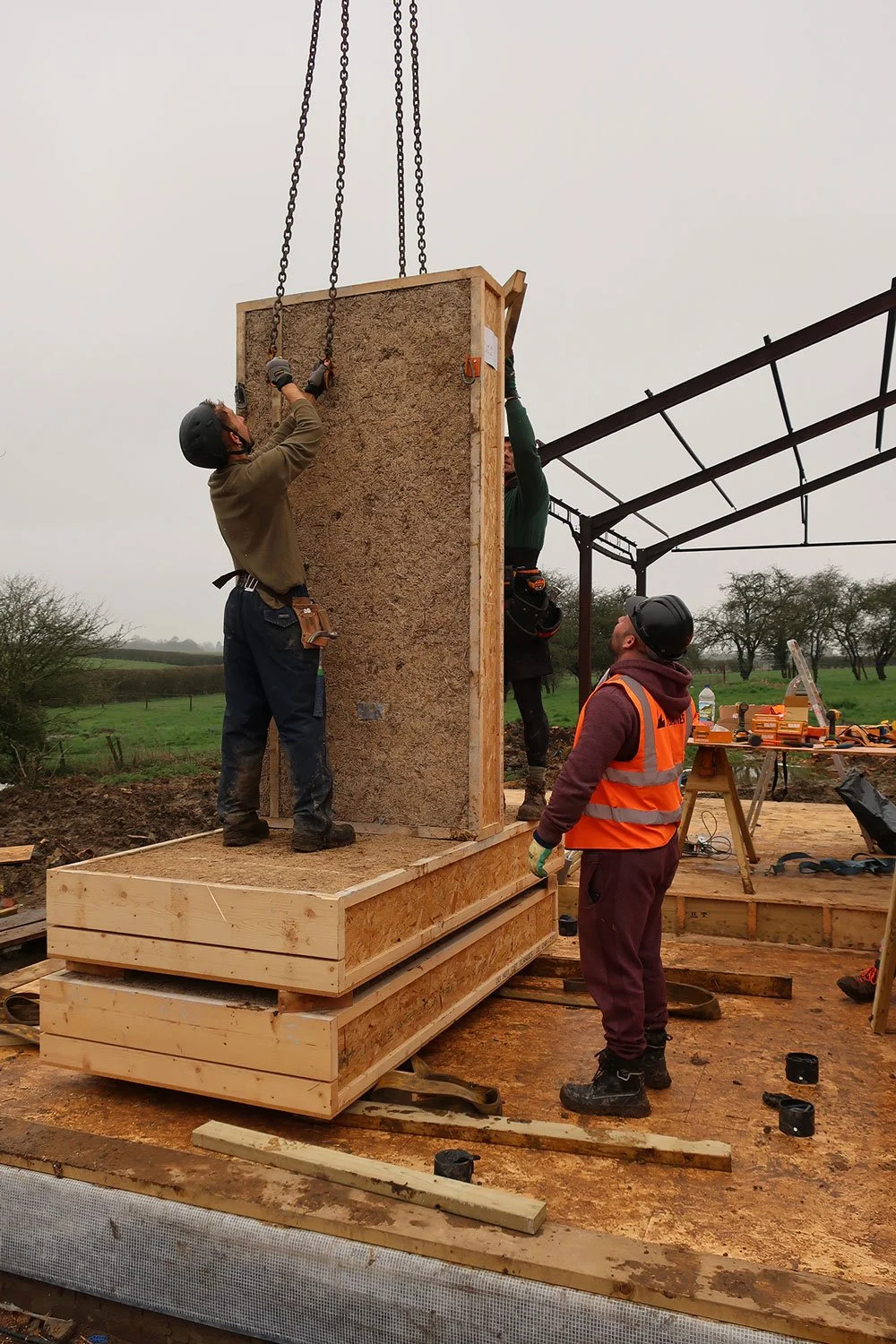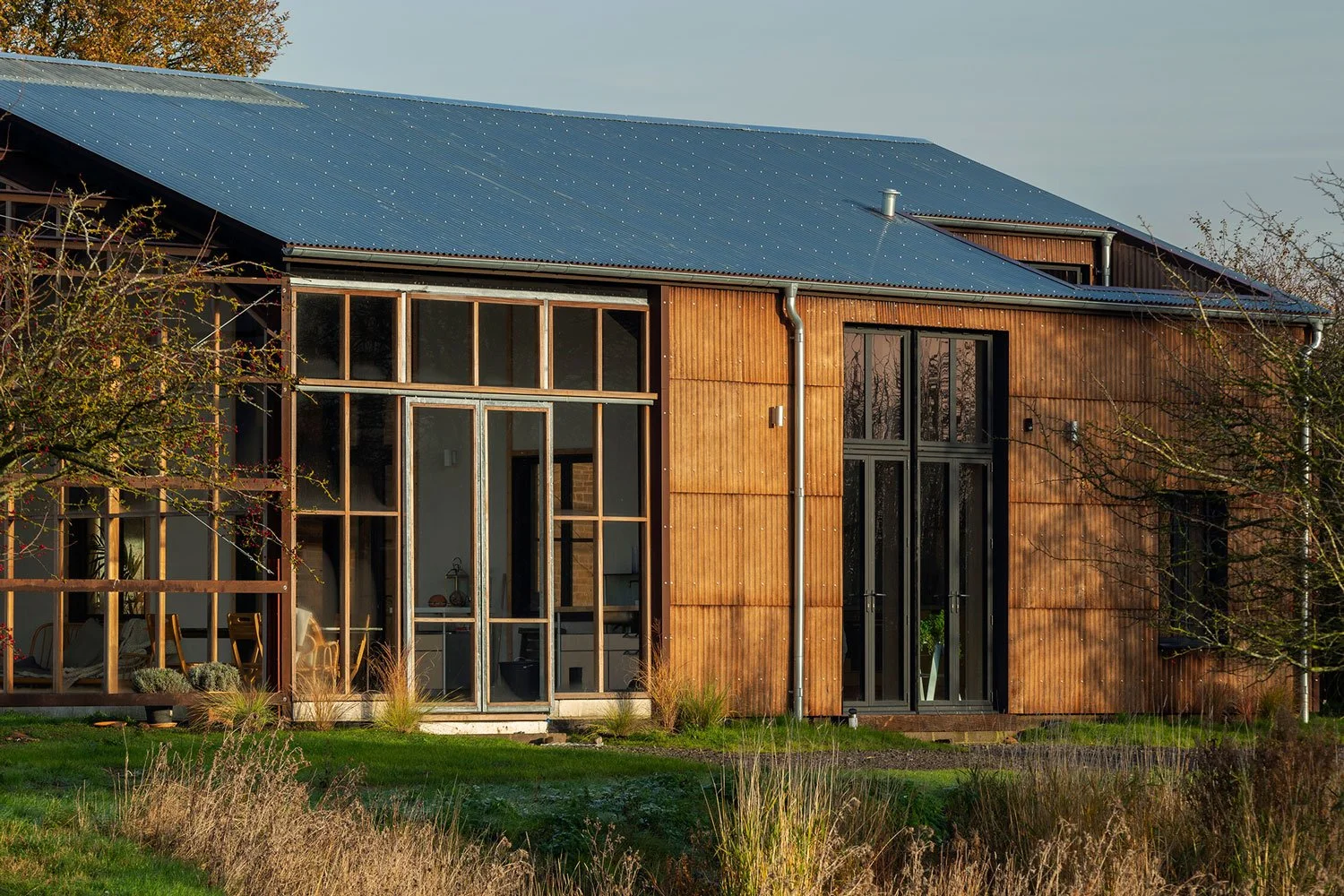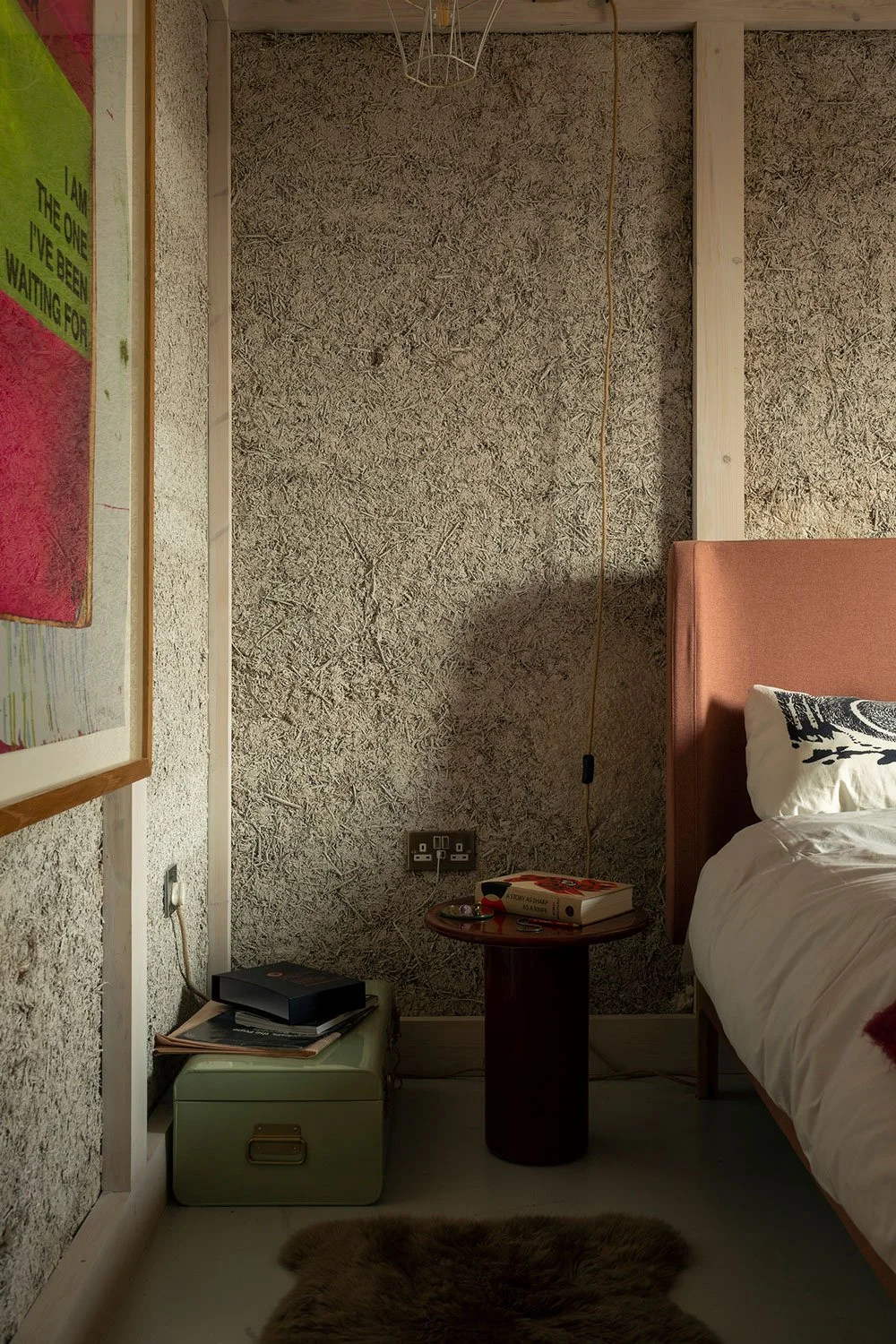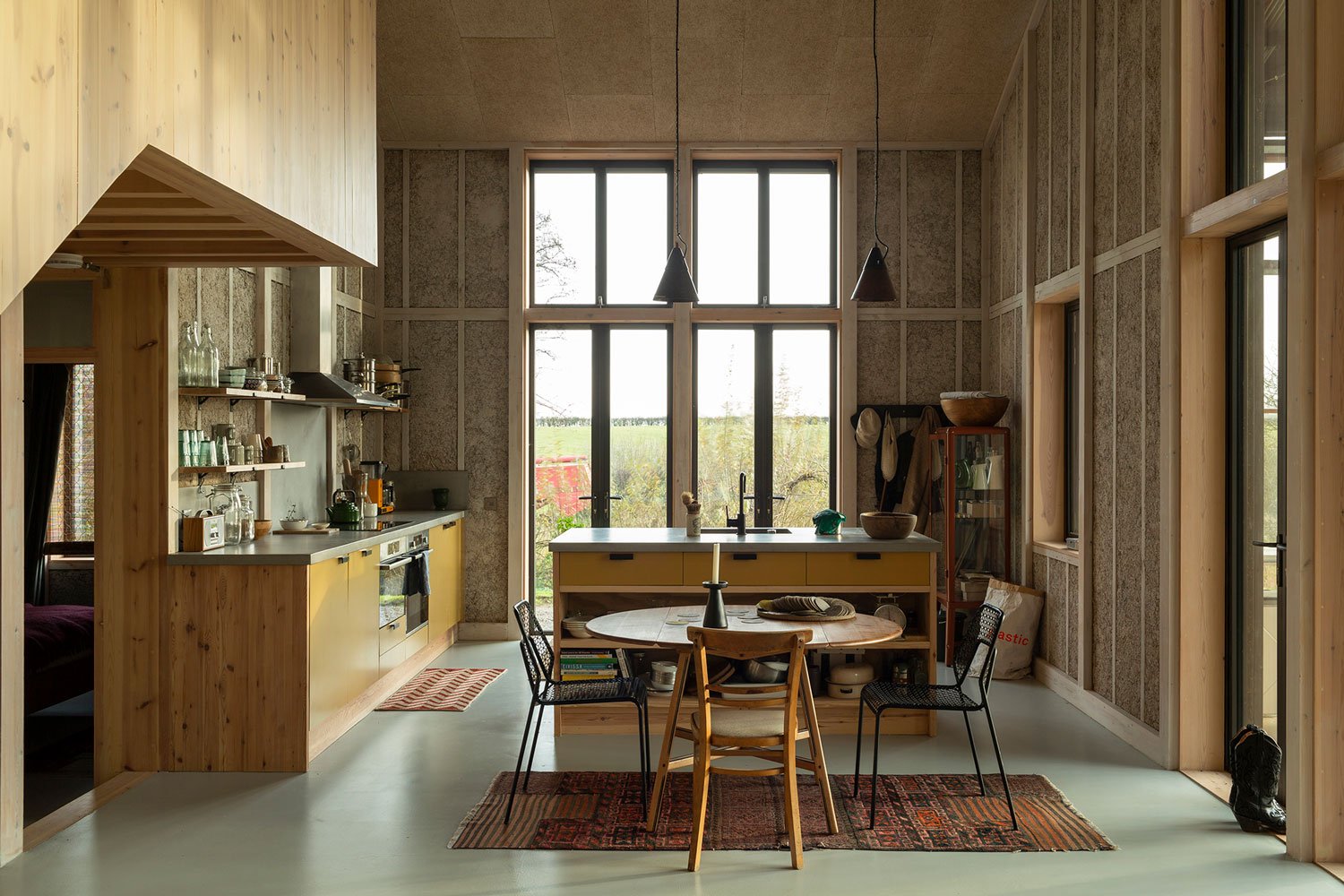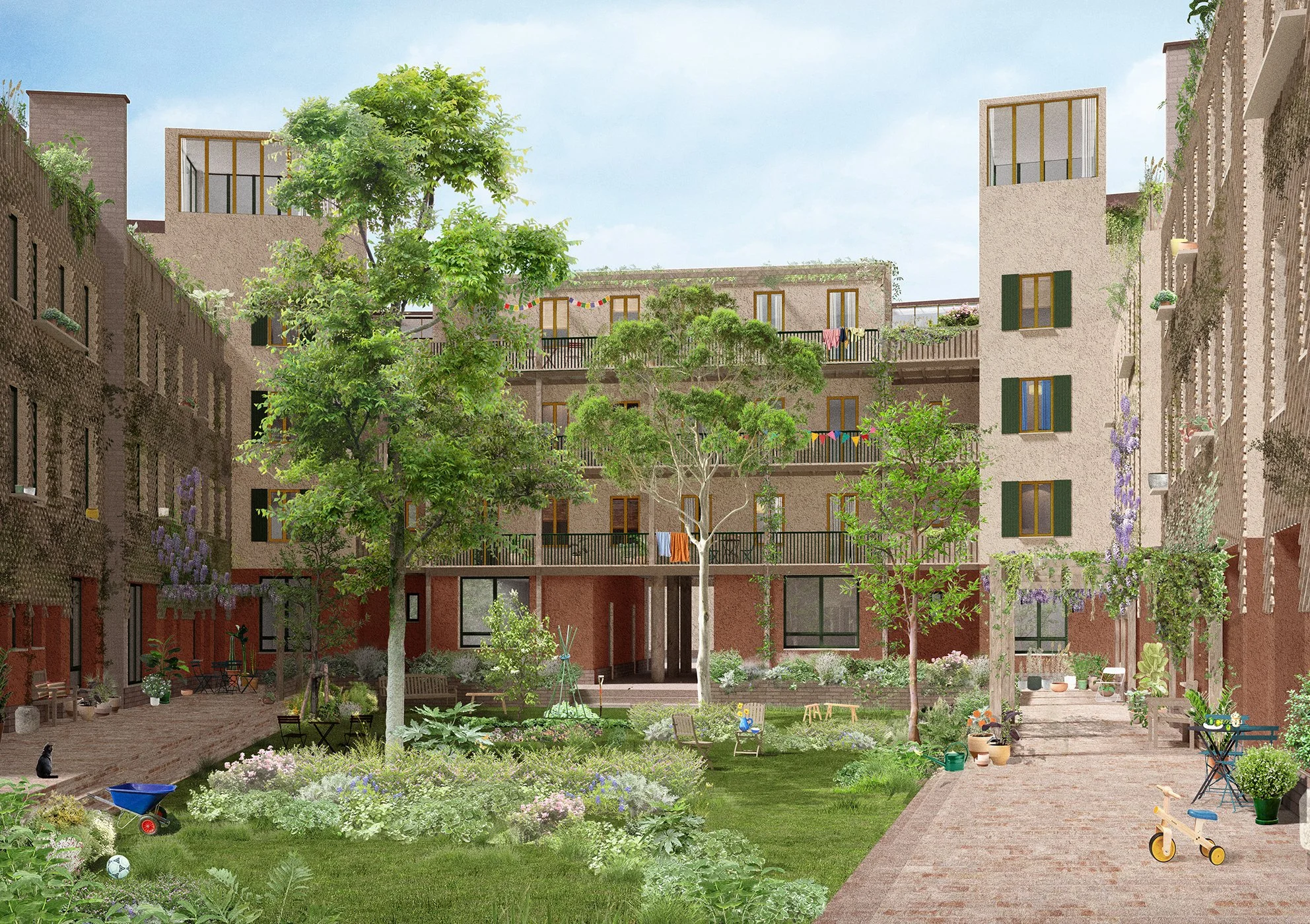Interview with Material Cultures
Across the year, we’ve been exploring how the design world has been striving to reach “carbon zero,” but what if we could go one step further? What if we could find ways of making and building that offer a post-carbon future? That’s exactly what the not-for-profit organisation Material Cultures have set out to explore over the past 4 years, the research from which they have recently released as a book titled Material Reform. The practice is made up of architects Summer Islam, Paloma Gormley and George Massoud, all of whom share a common passion for decarbonising the built environment through local and bio-based materials, that are regenerative, sustainable, and most importantly, scalable.
They combine design, practical research and action to develop, refine and champion natural, low-carbon construction materials and methods, including prototypical designs for regenerative, zero-carbon housing, employing natural, UK-sourced materials. The practice’s current work on the Phoenix Project comprises hundreds of timber and hempcrete homes in Lewes, East Sussex, and represents a further step from the work carried out for Margent Farm Flat House, which was completed in late 2019 and constructed from low-carbon timber prefabricated hempcrete structural panels.
The book itself challenges architects to go well beyond the technical drawing and consider the things in the physical world that are critical in understanding and acting upon the wider economic, climatic and ecological character of the construction. Each chapter covers a stand-alone topic from carbon to stone, value to supply chain and clay to demolition, although they still combine as a unified whole. It’s an incredibly informative read, and whilst much of the subject matter may still be discussing the destruction created by our industrial processes, it offers genuine insight into how we might radically but effectively change these methods of working, and with it, the impact that we are having upon our own humanity and all loving things.
JB: I’m really enjoying the many insights in your book new Material Reform, it’s both direct and practical in terms of what improvements the construction industry can make. Can you tell me a little about why you’ve written it?
PG: The book was born from the realisation that our current modus operandi can’t support the kinds of futures we envision for ourselves and those to come. As architects, builders, and citizens, we urgently need to rethink our relationship to the land and to each other in order to produce new forms of material practice, culture, and economy, in solidarity with people and landscape. We wrote Material Reform to make this case and outline what the post-carbon world might look like for architecture.
GM: The building practices dominating contemporary architecture are rooted in the exploitation of people and the degradation of our landscapes. Material Reform is our way of asking how architecture, construction and the built environment can shift away from a degenerative practice by rethinking our relationship to the land for the benefit of all life.
SI: We believe that in order to effect significant change, we need to engage with a larger audience, working across disparate industries and at multiple scales. We hope this book will invite more practitioners to engage with the urgency of our social and environmental crisis and the ways in which construction can drive positive change.
JB: Given its pocket size, the book feels incredibly detailed and thorough, although not so dense or technical that you need a Ph.D. to follow it. How have you gone about producing it, there must have been a considerable amount of research involved and perhaps a number of people too?
PG: It was very important to us that the book be accessible – the language is clear, the chapters are short, there are images, a glossary of terms, etc – that it felt like it came from a common voice that we could each identify with. A lot of the themes we engage with are commonly presented in academic texts or as material science, which makes them quite inaccessible to the general reader.
SI: Material Reform has been informed by years of conversations, collaborations, reading, research and listening. We have been influenced by far too many people to properly identify and credit everyone. But it’s important to us to acknowledge that they exist and to break with the long-standing tradition of presenting architectural ideas as if they were the sudden innovations of remarkable people. Instead, we present the book as the product of the sustained and diligent work of a network of intersecting and overlapping communities of thought and practice, which we are fortunate enough to be learning from and with.
GM: The photographs are the work of Jess Gough, who worked closely with us over six months to try and capture the material realities we were thinking about. And there are indeed a number of other key collaborations – the text has been co-authored by Amica Dall, with whom we discussed its ideas over a series of in-depth conversations; the environmental impact assessment of making the book was carried out by URGE Collective. Research and editorial support was provided by Sara Pereira, and the preface is by Charlotte Malterre-Barthes, Assistant Professor of Architecture at the Ecole polytechnique fédérale de Lausanne.
PG: We’ve included an extensive bibliography; we hope that this can become a sourcebook for people to refer to – a lot of the ideas in the book originate in this reading list.
JB: I guess already being part of a team of 3 means that collective thinking comes relatively naturally - something that is not always the case in our westernised individualistic culture? Has this helped in the creation of the book, and does it even give it a little more clout?
PG: As we state in the book, our own individual and collective histories and experiences have shaped our positions on the topics we cover. We frequently write in the collective first person (‘we’ and ‘our’) – as we would in ordinary speech – to refer flexibly to both our collective position as three individuals and to what we perceive as the wider collective perspective of the groups and systems in which we are situated, most of which are framed by the cultural, intellectual and practical context of our professional lives as three young architects working the UK.
SI: We don’t want people to think of this book as some sort of manifesto, but rather as our attempt to share our way of seeing construction and its relationship to the wider systems it sits within. Rather than suggesting that we have access to an objective universal experience – or even that such a thing exists – we’re inviting people to read the text as a product of the context in which it was written, and hope that they can freely reject or productively compare, contrast or critique the ideas as they relate to their own position and perspective.
JB: It feels like in order for genuine positive change to occur, there is a need for the industry to come together and to collaborate too.
GM: For construction to make a genuine contribution to the regeneration of ecosystems and resources, we need to engage with the whole material chain of extraction and disposal – a set of connected sites and processes that we’ve referred to as ‘the construction chain’. We need to reorientate action in this field away from the site of assembly and towards a construction practice based on collaboration with people engaged in regenerative resource management.
JB: That sounds really exciting and promising, can you explain what you mean by “regenerative resources”?
PG: Regenerative resources are resources that can be extracted from cyclic processes of regrowth without reducing the capacity of that cycle to regenerate. They are materials harvested from ecosystems that are being actively restored, or from restored ecosystems at a level at which they can continue to regenerate without the risk of progressive depletion. A central case we make is for the reconciliation of the built and natural worlds, which is why we have chapters dedicated to agriculture, soil and timber, as well as materials such as straw. Straw is a plant that grows quickly and reliably, sequestering carbon not just above ground but also in its roots, and there’s a strong case for it to be utilised far more regularly as a building material.
SI: For the construction industry, this is a question that goes beyond procurement, which often adds up to little more than choosing the least harmful of a range of established options. Instead, a regenerative approach to construction starts at a regional level, with a study of the quantity and character of materials that can be harvested from regeneratively managed land, and incrementally rebuilds construction chains from that point forwards. Adopting an approach to construction grounded in regenerative resources requires a wholesale re-interrogation of the material palette that we use to make buildings. Although a concern for where materials come from and how they are produced sits outside the remit of most practising architects, any meaningful reform of construction practice must start with it.
JB: You mentioned straw there and I’m aware that you’ve already used it in the form of hempcrete for Flat House, a project at Margent’s Farm in Cambridgeshire. It’s a wonderful example of the research you’ve been doing culminating in a built structure. Can you tell me a little more about it and how it’s made, as well as the benefits it offers over conventional construction?
PG: Flat House was very much an experiment for us; we view the project as part of the process of our ongoing research into hemp as a building material, rather than the culmination. It was constructed using prefabricated timber panels filled with hempcrete – a mixture of hemp shiv and water, with lime as a binding agent. As an organic material, hemp is an effective carbon store, and the hempcrete block is a natural thermal mass, absorbing heat from the sun and diffusing it into the space as it cools. In Flat House, we used a combination of panels made using hemp grown from the farm’s own first-ever hemp crop – part of Margent’s own ambitions to bring the plant back into use.
JB: You mentioned measuring the book's own impact earlier and I believe you’ve also calculated this in the same way you might a building?
GM: It felt appropriate to us that a book written in response to climate emergency would include a detailed breakdown of the environmental impact of its own development and publication. Alexie Sommer and Ralf Waterfield of URGE Collective calculated the embodied carbon of every aspect of its production – from email exchanges between the team to the glue used in binding, providing total transparency. 51% of the book’s impact is in its distribution, 43% in production, and 16% in photography. On the assumption of 2,800 copies sold, each copy of Material Reform represents 500g CO2e – the equivalent of three hours spent watching Netflix.
For more information about the book and the work Material Cultures do visit www.materialcultures.org or email materialcultures@zetteler.co.uk
This article was first published by Design Insider


